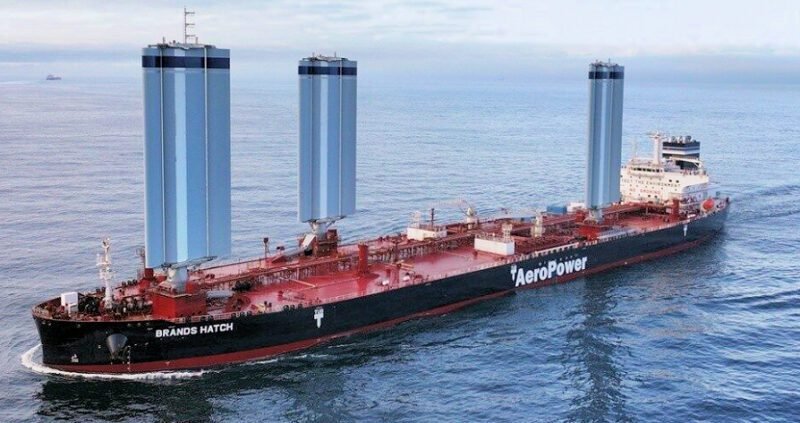Japan’s Mitsui O.S.K. Lines (MOL) has unveiled a groundbreaking design concept for an LNG carrier featuring a wind-assisted propulsion system. This innovative plan aims to extend the use of the rigid sail technology, known as Wind Challenger, from dry bulk carriers to gas carriers as part of MOL’s corporate strategy to achieve decarbonization goals. The rigid sail, developed in collaboration with Oshima Shipyard, has already proven successful in reducing fuel consumption on a newbuild dry bulk carrier.
Collaborating with South Korea’s Hanwha Ocean, MOL has adapted the Wind Challenger design for a standard size 174,000 cubic meter LNG carrier. This new design includes the installation of two rigid sails on a 938-foot vessel, with each sail reaching a maximum height of 160 feet and a width of 49 feet. Despite the challenges posed by integrating the sails with the existing structure, MOL, Hanwha Ocean, and ClassNK have conducted a thorough risk assessment to ensure the safety and feasibility of the design.
ClassNK, a renowned classification society, has granted an approval in principle (AiP) for the membrane LNG carrier design incorporating the Wind Challenger technology. Detailed design work is now underway for the new LNG carrier ordered from Hanwha Ocean, with a focus on seamlessly integrating the wind-assisted propulsion system. The ambitious plan outlined by MOL aims to have 25 vessels equipped with Wind Challenger by 2030 and 80 vessels by 2035, marking a significant step towards sustainable shipping practices.














